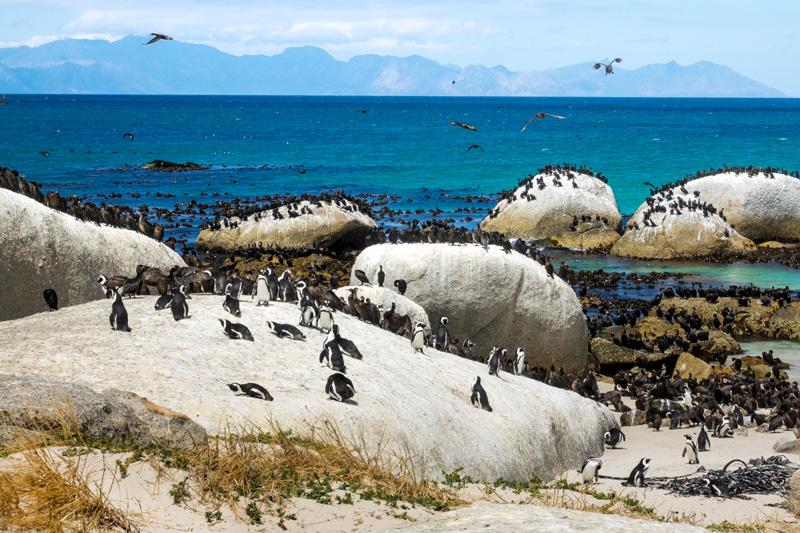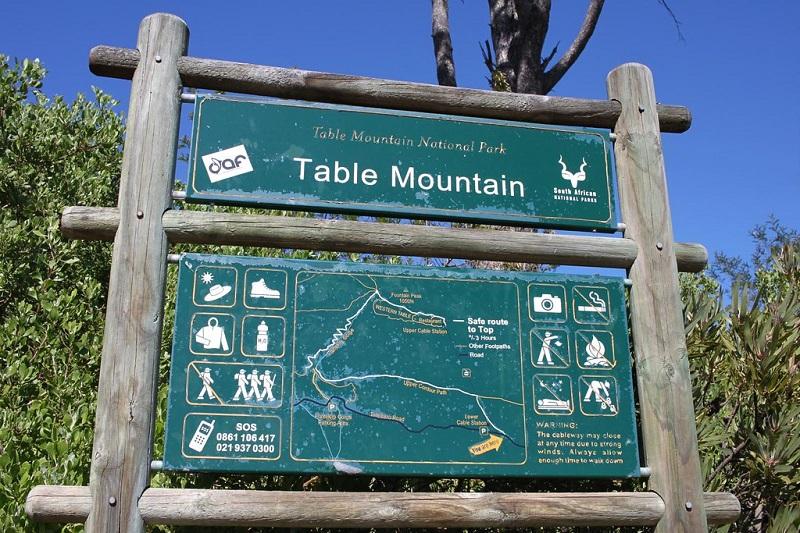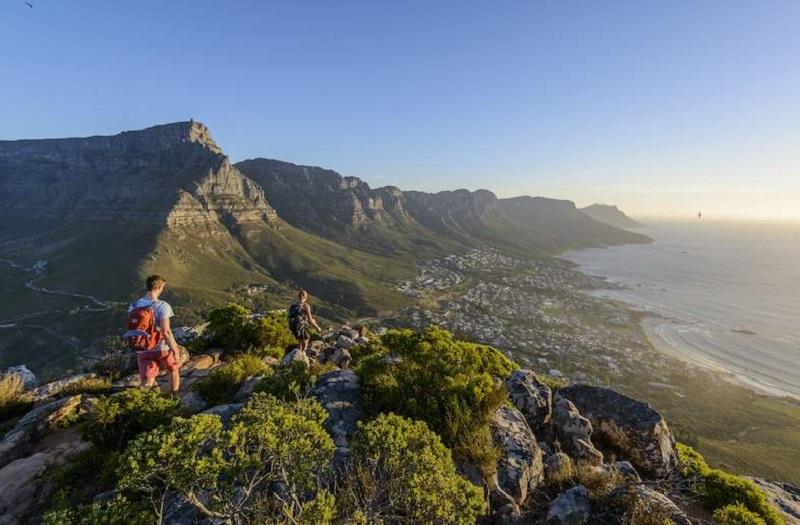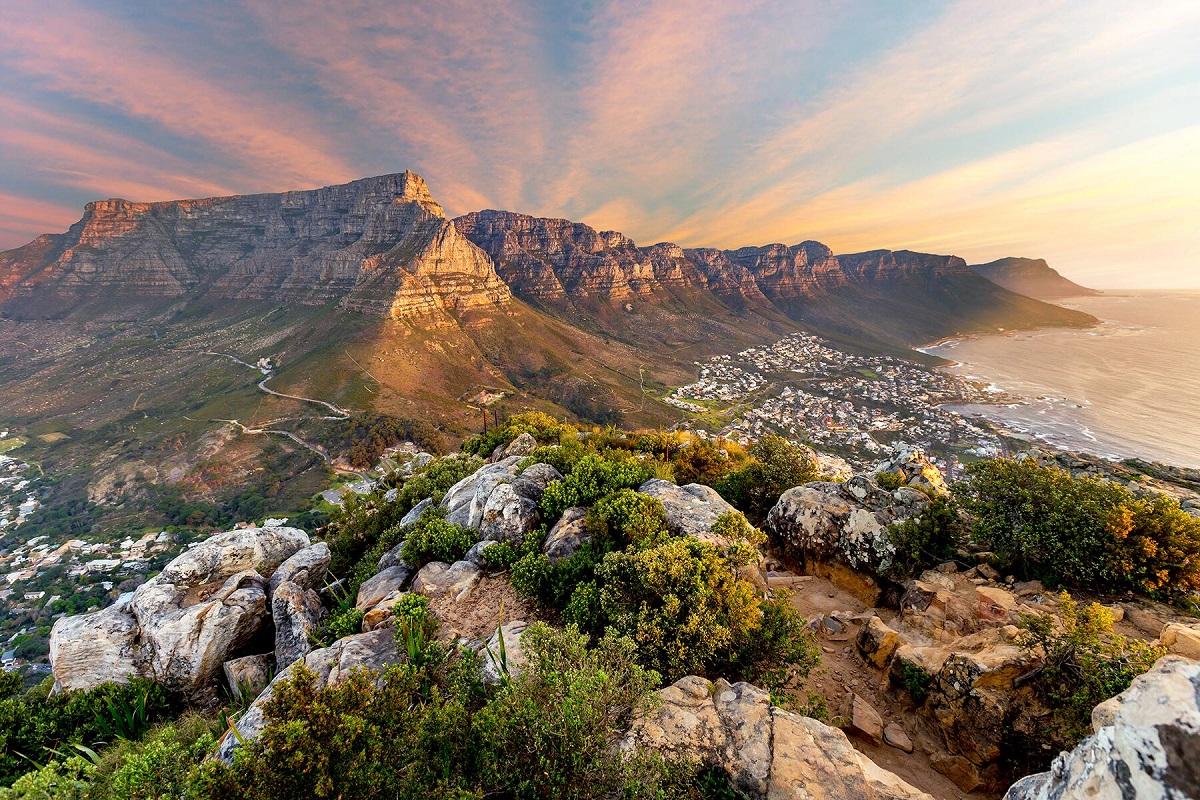Nestled at the southwestern tip of Africa, Table Mountain National Park is one of South Africa’s most iconic and breathtaking natural reserves. This diverse park stretches across a narrow finger of land that juts into the Atlantic Ocean, encompassing a unique landscape filled with mountains, beaches, forests, and diverse ecosystems.
Home to the renowned Table Mountain, as well as many other natural wonders, the park offers an unforgettable experience for visitors from around the world. Here’s our comprehensive guide to Table Mountain National Park;
Please Download Our Mobile App here.
Overview of Table Mountain National Park
When you arrive at Table Mountain National Park, you’ll be greeted by scenes of mountains plunging into sparkling oceans. Established in 1998, Table Mountain is a World Heritage Site and one of the New Seven Wonders of Nature. It’s located in South Africa’s Western Cape Province.
Known to the indigenous Khoisan people as Hoerikwaggo, or “mountain in the sea,” this spectacular landscape showcases much more than its famous tabletop peak and surrounding waters. Falling within the richly biodiverse fynbos biome, Table Mountain National Park offers a glimpse into the Cape Floral Kingdom. Here fine bush species bloom throughout the year, painting the landscape with vibrant colors.
Outdoor enthusiasts will find ample hiking trails open at no cost. However, popular sites like the Cape of Good Hope and Boulders Beach in Simonstown do require a nominal fee. From scenic walkways at Boulders to the exhilarating ascent of Cape Point via the Flying Dutchman funicular, this park brims with activities and natural beauty that captivate every visitor.
Wildlife in Table Mountain National Park

Table Mountain National Park may not be the place to spot Africa’s famed Big Five, but it still boasts an impressive array of wildlife. The park is home to several small antelope species, such as the klipspringer, grysbok, common duiker, grey rhebok, and steenbok. You’ll also encounter larger antelope, including eland, red hartebeest, and bontebok.
Other notable residents include the endangered Cape mountain zebra, the iconic ostrich, and groups of playful chacma baboons. Though elusive, smaller creatures like the Cape clawless otter, small grey mongoose, porcupine, caracal, and Cape fox have also been sighted in the park.
For bird enthusiasts, the park is a paradise with over 300 bird species, including the rare albatross, white-chinned petrel, African penguin, and sooty shearwater. Raptors like the jackal buzzard and steppe buzzard are often seen soaring overhead, while the colorful Cape siskin and Cape sugarbird bring life to the park’s flourishing vegetation.
Best Time to Visit Table Mountain National Park
The best time to visit Table Mountain National Park depends on what you’d like to experience. For warm days at the beach, summer (December to February) is ideal. The season is known for its hot, dry weather typical of the park’s Mediterranean climate. However, the stunning scenery is a year-round draw, with winters (June to August) offering milder temperatures and fewer crowds.
Weather can change quickly on the mountain, so it’s wise to be prepared for varying conditions no matter the season. For the best visibility and enchanting views of Cape Town in golden light, plan to visit in the early morning or evening, especially around sunrise or sunset. From May through November, you can enjoy quieter trails and fewer lines for the cable car.
Getting to Table Mountain National Park

Given that it’s located in the bustling Cape Town, Table Mountain National Park is one of the most easily accessible national parks in South Africa. The national park can be accessed via several public transport options, taxis, Uber, and several sightseeing tour buses.
For public transport, look out for the MyCiTi Bus. It is an eco-friendly and budget-friendly way to get to the Table Mountain Aerial Cableway. The buses depart from the Civic Centre in Hertzog Boulevard and stop at the top of Kloof Nek Road. From there it’s a short walk from the Cableway. Each passenger needs a myconnect card loaded with money or MyCiTi points, as cash isn’t accepted.
For a more scenic route, City Sightseeing’s “hop-on, hop-off” buses run every 20 minutes, making stops at major Cape Town attractions. They often stop at the V&A Waterfront and Long Street before heading directly to the Cableway. Alternatively, meter taxis and Uber rides are readily available throughout Cape Town.
Other Activities in Table Mountain National Park
Table Mountain National Park offers a range of outdoor activities that showcase its natural beauty and wildlife. Adventure seekers can hike the park’s trails, surf along the Atlantic coast, or cycle through scenic paths. There are also many ideal spots for picnicking, sunbathing, and swimming.
Boulders Beach is particularly unique; it’s home to over 2,500 African penguins and is the only beach in the world where humans can swim alongside these charming birds. Kirstenbosch Botanical Gardens provides a lush escape, with indigenous flora and seasonal flowers creating a beautiful setting for relaxed walks.
Lion’s Head, a 669-meter peak, draws adventurers with an hour-long hike that’s popular during sunset and even at night; thrill-seekers also use the peak as a paragliding launch site. For a simpler excursion, visitors can drive up Signal Hill, where sweeping views of Cape Town and its harbor await, along with the daily firing of a historic noon cannon.
Park Fees in Table Mountain National Park

Visitors to Table Mountain National Park are subject to a range of fees based on nationality and intended activities. For the 2023–2024 period, daily entry fees are set at R100 (around $5.50) for South African citizens and residents (R50 or $2.75 for children). SADC citizens will pay R200 ($11) and R100 ($5.50) for their children. International visitors pay R400 ($22) and R200 ($11) for their children.
You’ll also be required to attain certain activity permits at a small extra cost. These are required for activities such as dog walking, cycling, fishing, and commercial ventures like filming, photography, and tour guiding.
FAQs
Can you tour Table Mountain National Park on your own?
Yes, you can tour Table Mountain National Park on your own. However, it’s recommended to get a guide, especially if you’re unfamiliar with the area or plan to do extensive hiking. The park does not encourage solo hikes.
Private guided hikes on Table Mountain typically cost between R1,500 and R3,000 (about $82 to $165) per person. This price includes a guide, snacks, water, a picnic lunch, and transfers to and from your accommodation, providing a more enjoyable and secure experience.
Do you need a 4×4 vehicle to tour Table Mountain National Park?
No, you don’t need a 4×4 vehicle to tour Table Mountain National Park. The primary way to reach the top of Table Mountain is via the popular cable car. The cable car is accessible to all visitors, and you can purchase tickets for a return trip or one-way ride.
An all-day return ticket costs R490 ($27), while a one-way ticket is R280 ($15.40). Children’s return tickets are R245 ($13.50) and one-way tickets are R150 ($8.25). Special discounted rates are available for senior citizens (SA residents) and students.
Conclusion
Table Mountain National Park is more than just a destination; it’s an immersion into South Africa’s natural splendor, a vibrant display of biodiversity, and a testament to conservation in action. Whether you’re captivated by the sweeping views from Table Mountain, the floral beauty of the fynbos, or the serene Cape Point, this park offers an experience as diverse as the ecosystems it protects.



